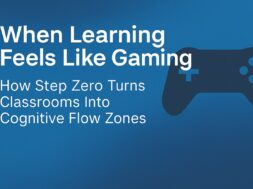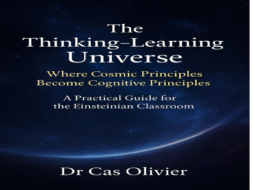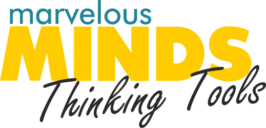ClicK HERE to learn more about the mimic brain and its relation with the Thinking Brain
Teachers often underestimate just how contagious their thinking is. The moment you step into a classroom, your brain is already shaping your students’ brains—through tone, presence, energy, and especially how you think through problems. This is neural resonance in action.
If you model passive “talk-and-chalk” delivery—simply explaining while students watch silently—you may unintentionally train their brains to become passive receivers rather than active thinkers. Over time, this can dull curiosity, lower engagement, and reinforce a surface-level learning mindset. But when you model visible, strategic, and critical thinking—when learners see you wrestling with ideas, making connections, asking questions—they don’t just learn content; they mirror your process. That’s when real learning happens. This isn’t just theory. It’s neuroscience.
Most people think learning is just about knowledge transfer—get the content from the teacher’s mouth to the learner’s brain. But cutting-edge neuroscience reveals something far more powerful happening beneath the surface: neural resonance.
What Is Neural Resonance?
Neural resonance is the phenomenon where one person’s brain activity begins to mirror another’s during moments of shared attention, emotion, or connection. This is driven largely by mirror neurons—specialized brain cells that fire not only when we act, but when we observe others acting.
In learning, this means:
The more emotionally connected a learner feels to the teacher, the more their brain mirrors the teacher’s brain patterns.
It’s not just teaching—it’s syncing.
The Real Benefits of Neural Resonance in the Classroom
1. It Captures Attention
Emotion drives attention. When learners feel emotionally connected—through voice tone, facial expressions, or even genuine enthusiasm—they’re more likely to stay focused.
Neural resonance turns passive listening into active engagement.
2. It Boosts Memory and Retention
The emotional charge behind an interaction helps anchor it in memory. Neural resonance activates the limbic system, linking what’s learned with how it felt.
We don’t just remember facts—we remember feelings attached to them.
3. It Deepens Understanding
When learners see a teacher’s excitement about a concept, their brain mirrors that excitement. This helps move beyond surface learning into conceptual grasp.
Curiosity is contagious—because brains sync.
4. It Builds Trust and Psychological Safety
When learners feel “seen” and understood, the brain relaxes. This lowers fear of failure and opens the door for authentic exploration and questioning.
Safety isn’t soft. It’s essential for risk-taking in learning.
5. It Powers Empathy and Social Learning
In group settings, neural resonance enables learners to read emotions, anticipate reactions, and build social awareness.
Emotional intelligence grows through resonance, not rules.
So What Does This Mean for Teachers?
Teaching isn’t about delivering content—it’s about creating connection. When educators teach with emotion, passion, and authenticity, they trigger resonance that transforms how learners process, retain, and apply what they learn.
It also means:
- Eye contact matters.
- Authentic passion matters.
- Listening matters.
- Connection is not optional—it’s foundational.
Bottom Line:
Neural resonance is the invisible force that makes learning stick.
It turns the classroom into a space where brains sync, emotions guide attention, and relationships unlock understanding.
Let’s stop asking, “Did I explain it well?”
And start asking, “Did we resonate?”





